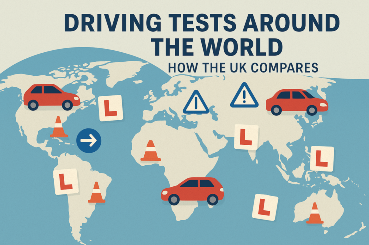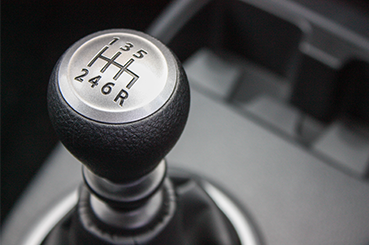Preparing for your UK driving theory test? You’re in the right place! We’ve compiled a list of 10 essential steps to help you succeed on this important milestone towards becoming a licensed driver in the UK.
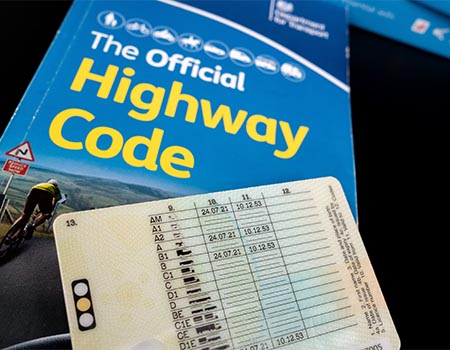
1. Learn the Highway Code
The Highway Code is your go-to source for vital information, whether you’re a seasoned driver or just starting out. It contains rules that are not just guidelines but legal requirements.
Failing to follow them could lead to criminal offences. It covers rules for pedestrians, cyclists, and motorists. There are plenty of online resources available for studying the Highway Code.
2. Know How to Keep Your Vehicle Safe
Vehicle safety knowledge is crucial. You’ll be tested on essential vehicle maintenance tasks like checking engine oil and tyre pressure.
Understanding the proper use of seat belts and airbags, especially for child safety, is also important. Learn how different factors can affect your vehicle’s performance, from long journeys to wet weather driving.
3. Understand Road Markings
Road markings are a part of your theory test. Study the various road markings used on carriageways, along roadsides, and in urban areas.
Familiarise yourself with waiting and parking restrictions, as well as curb and junction markings.
4. Understand Roadside Signage
Road signs are there for your safety. You’ll need to know what different signs mean and where they are typically placed.
Learn that red signs indicate hazards, blue signs offer positive instructions, and warning signs are usually triangular. Brush up on direction and route signs to enhance your navigation skills without relying solely on GPS.
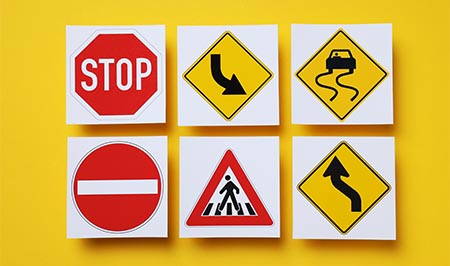
5. Be Able to Identify Road Hazards
Hazard perception is a crucial part of your test. You may need to identify hazards in images, such as pedestrians, animals, or junctions. Multiple-choice questions might ask you which of these hazards requires you to slow down.
6. Know the Types of Vehicles on the Road
Your understanding of various vehicle types and how they behave on the road will be tested. Learn how to respond to situations involving large vehicles like articulated lorries, as well as how to interact with buses, ambulances, and maintenance vehicles.
7. Know the Essential Driving Tips
Essential driving tips include handling adverse weather conditions, safe overtaking and manoeuvring techniques, and navigating roadworks. These scenarios involve various hazards and require a thorough knowledge of the Highway Code.
8. Practice! Practice! Practice!
The key to success is practice! Take advantage of the plethora of online resources available for mock tests in both multiple-choice and hazard perception formats. These practice tests will help you understand the question types and identify any knowledge gaps.
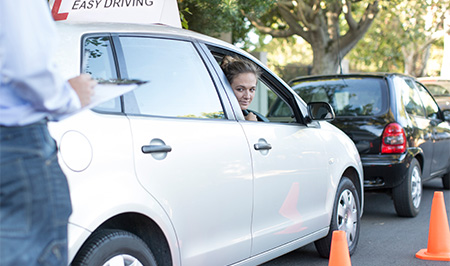
9. Get Out Driving!
If you have access to an insured vehicle outside of your regular lessons, take advantage of it. Practical experience on the road will reinforce your understanding of the Highway Code and provide invaluable real-world insights.
10. Research the Test Format
Familiarise yourself with the test format. The theory test consists of a multiple-choice test with 50 questions, requiring a pass mark of 86%. The Hazard Perception test assesses your ability to respond to real-life road situations in video clips. Mock tests are available online for both parts. Knowing the format beforehand will boost your confidence on test day.
In conclusion, the UK driving theory test comprises two critical parts. The first part involves a set of 50 multiple-choice questions, the second part is the hazard perception test. To get more insights on what to expect during your driving theory test, make sure to visit our comprehensive ‘What to Expect on Your Driving Theory Test’ blog.
But your journey towards becoming a licensed driver doesn’t end there. If you’re looking for guidance on acing your practical driving test as well, we’re here to help. Explore our valuable tips on how to pass your driving test on your first attempt and take the next step in your exciting driving journey.
By following these 10 steps, you’ll be well-prepared to tackle your UK driving theory test with confidence and increase your chances of passing it successfully. Good luck on your journey to becoming a licensed driver!

